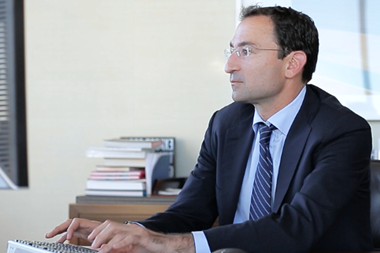Innovation is about imagining a better future. Among the ramifications of the Covid-19 pandemic, many employees are still concerned about their health in the workplace and are opting to work remotely – leading to struggling city centres and organisations holding leases for properties that are far from full capacity.

This new landscape, coupled with increasing economic uncertainty, is leading companies to look for ways to adapt to new ways of working, embrace innovation and help differentiate themselves.
Research shows that companies that invest in health strategies can benefit from enhanced performance and increased financial returns, be it through the buildings they own and operate, or the policies, protocols and organisational culture that they adopt across the enterprise.
Investing in Health Pays Back: The Growing Research Behind the Business Case for Healthy Buildings and Healthy Organizations is a compilation and summary of nearly 60 peer-reviewed and other leading studies from many of the most reputable research organisations in the world, including the Massachusetts Institute of Technology (MIT), Harvard’s TH Chan School of Public Health, Wharton School of the University of Pennsylvania, the Pacific Northwest National Laboratory, Rocky Mountain Institute (RMI), the University of Colorado-Boulder and many more.
This in-depth research review shows commercial real estate investments focused on health and wellbeing are connected to higher rent premiums, increased occupancy rates, longer lease terms and improved tenant satisfaction. A study led by researchers at MIT found certified healthy buildings commanded higher rents of up to 7.7% more per square foot. Healthy spaces also yielded longer lease terms – more than a year longer on average (88.3 months compared with 75.3 months). Access to nature and increased levels of daylight can also be linked to rent premiums. A recent study in Landscape and Urban Planning found offices with higher green index scores yielded rent premiums up to 7.8%. And a study in the Journal of Building and Environment found that offices with high levels of daylight saw up to a 6% rent premium.
Leaders in the healthy building movement are already experiencing these financial benefits, and they know that taking a healthy building approach pays back. A 2022 peer-reviewed study found that WELL-certified offices not only improved overall occupant perceived satisfaction by 28%, but also yielded a 10-point jump in median productivity scores.
While the health benefits of people-first practices have long been established in public health and building science research, these investments can also elevate business performance by improving productivity and making it easier to attract and retain top talent.
Healthy building solutions alone could support $200bn in productivity gains among US office workers, according to Berkeley Lab. The Building and Environment study found WELL-certified offices were connected to a 10-point jump in median occupant productivity scores. In a peer-reviewed study, Harvard researchers found that higher ventilation rates linked to an 8% uptick in employee performance, equivalent to a $6,500 increase in productivity per employee per year.
The research makes clear that a strategic investment in health and wellbeing is an imperative for organisations around the world. What’s good for people is also good for business.
Ann Marie Aguilar is senior vice-president for EMEA at the International WELL Building Institute
































No comments yet